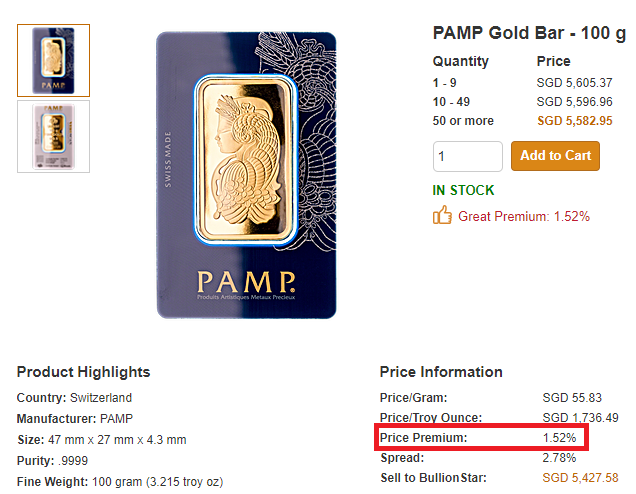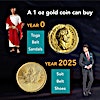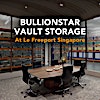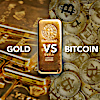How can we help? Ask a question or describe a problem you're having.
-
Buy Gold & Silver from BullionStar
- BullionStar at a Glance
- Bullion Shop, Showroom & Vault in Singapore
- Buy Gold & Silver from BullionStar in 4 Easy Steps
- Buying Gold & Silver from BullionStar - Detailed Guide
- Payment & Payment Methods
- Retail Shop & Customer Support Opening Hours
- Cryptocurrency as Payment Option and Currency
- Delivery and Storage for Precious Metals in Singapore
- Tax Free Bullion in Singapore
- Precious Metals IRA
- Privacy Ensured with BullionStar
- Investment Precious Metals
- Affiliate Program
- Buy Precious Metals from BullionStar in Singapore - FAQ
- Contact Us
- BullionStar Auctions
-
BullionStar Account
- Set up Your BullionStar Account in a Matter of Seconds
- How to add a Joint Account Holder
- Keeping Funds on Your BullionStar Account
- How to Fund Your BullionStar Account
- How to Withdraw Funds From Your BullionStar Account
- How to Sell Bullion with the Proceeds Paid to Your BullionStar Account
- 2-Factor Authentication via Google Authenticator or SMS
- BullionStar Account - FAQ
- Our Products
-
Vault Storage
- BullionStar's Vault Storage Solution
- Bullion Storage in Singapore
- BullionStar's Vault in Singapore
- Storage Options
- Direct Legal Ownership
- Allocation of Physical Precious Metals
- Insurance
- Bullion Audits
- How to Buy Bullion for Vault Storage
- How to Sell Bullion in Vault Storage
- How to Withdraw Bullion from Vault Storage
- Convert/Withdraw BSP Grams
- IT & Account Security
- In Case of Death
- Fee Schedule
- Sell To BullionStar
- About BullionStar
- Terms & Conditions
Product Price Premium
Precious metals bars and coins will generally have a higher price than the Spot Price for that particular precious metal. The difference between the price for a certain bullion product and the spot price is called the price premium.
Price premiums for precious metals bars and coin reflect a number of factors. Part of the premium will reflect natural refining and/or minting costs such as fabrication, marketing, distribution and insurance costs. This part of the premium is called the natural premium.
Another component of a premium is semi-variable and reflects physical market supply and demand fluctuations. This is known as the market premium. If demand for a bullion bar or bullion coin is relatively high to the supply, its premium will increase. If supply of the product is more abundant, the premium would tend to be lower.

Natural Premium
The natural premium on a bullion bar or bullion coin can be illustrated by looking at the production cost of gold, silver or platinum in bullion form.
Precious metals in bullion form are often minted into 1 troy ounce bullion coins or into smaller bars ranging from 1 gram to 10 kilogram weights. It is an advanced process to melt, refine, mint, assay and certify bullion products with high quality and precision. Everything from design work to manually engraving stamps has to be calculated in the overall cost.
It is therefore normal that a 1 troy ounce bullion coin or bar costs more than 1 troy ounce of precious metal contained as part of a larger bar. The natural premium does not fluctuate much over time, and generally matches the cost of the this process.
In general, the premiums on larger bullion bars will tend to be lower than premiums on smaller bullion bars and coins in percentage terms.
In terms of gold versus silver, given that spot price for gold is many times higher than the spot price for silver, it will also be the case that the premium on a 1 ounce silver coin will be a larger percentage-wise compared to a 1 ounce gold coin.
Spot Prices in Paper Markets
The Spot Price for a precious metal is the current market price at which that precious metal in large quantity can be bought or sold in the wholesale market for immediate delivery. During the trading week, precious metals trade continuously around the world on a non-stop 24 hour basis based on continuously quoted bid-ask prices from wholesale market participants such as bullion banks and commodity trading companies. The prices at which these transactions are executed essentially form the spot price, or international spot price. By convention, the spot price is quoted in US dollars per troy ounce.
In practice, international spot prices are set or discovered by the trading venues with the largest trading volumes, which in the case of gold, silver and platinum, are the London over-the-counter (OTC) market and the COMEX futures markets. Local precious metals markets around the world then inherit these internationally derived prices and use them for setting and quoting their own local gold prices. Although the London OTC and COMEX futures markets are predominantly cash-settled and trade synthetic forms of precious metals which have little or no connection with underlying physical positions, physical precious metals industry participants consisting of e.g. miners, refiners, mints and wholesalers, remain price takers and have no choice but to use the spot prices derived in the trading venues with the largest trading volumes.
Market Premium
The second part of the price premium is the market premium. This part of the premium reflects the difference between the price of paper precious metal on the spot market plus the natural premium and the price of physical metal on the real physical market. The market premium fluctuates depending on different factors such as:
- Availability of precious metals coin blanks used to produce bullion coins
- Lack of production capacity for smaller coins/bars
- Limited mintage or issuance of certain bullion coins
- General physical demand/supply factors
- Counterparty risk in the London over-the-counter markets and on the COMEX futures markets
For example, in the fall/winter of 2008, the spot price of silver traded below US$ 10 but the premiums on 1 oz silver coins such as Silver Eagles and other government minted coins reached 100% due to some of the factors listed above.
Spreads
The spread is the difference between the buy price and the sell price at any one point in time. The spread of each product is determined by the following factors:
- Demand and Supply of the product
- Trading volume of the product
BullionStar is the first bullion company in the world to offer a product with no-spread! Take a look at the BullionStar 100g Minted Gold Bar and the BullionStar 1kg Silver Bar.
Related Topics:
BullionStar's Vault Storage Solution
Buy Gold & Silver from BullionStar in 4 Easy Steps
BullionStar Bars - No Spread Bullion










